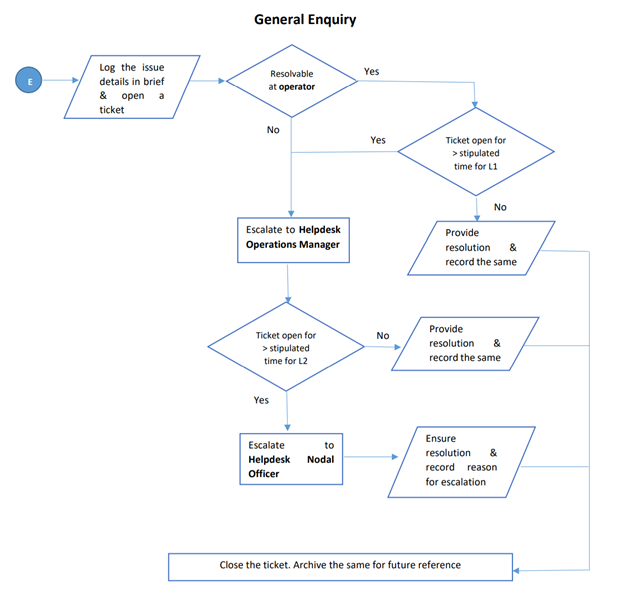For an organization to function seamlessly, it is imperative that employees are on the same page. Otherwise, the business falls apart in no time.
How do you ensure that? You keep SOPs in place. Let’s begin with understanding what SOPs are?
What Is an SOP?
SOP stands for Standard Operating Procedure which is a document that has guidelines and instructions that directs employees about how to go about certain processes.
Please note that an SOP is different from a procedural document. The latter provides an overview of a given process whereas the former gives a detailed explanation.
For example, a procedural document will tell you that an organization will go from int A to point B while the SOP is going to explain what all an organization has to do to get to point B.
Let’s have a closer look at the differences:
- A procedural document works at a higher level while an SOP gets into the details and specifics.
- In a procedural document, you let your audience know about an outcome that needs to be achieved. While, in an SOP, you also mention the how, when, who, and where to achieve the desired outcome.
- While a procedural document takes a step-by-step approach, an SOP adds the nitty-gritties and other comprehensive details as well.
Types of SOP
As per your company’s needs, you can either develop internal SOP documents as you like them or can follow any one of the following formats.
Step-by-Step
This is a simple numbered and bulleted format that you can take for certain processes. This format is mostly used when the process in question is straightforward and can be completed without any major issues.
The step-by-step type can be used for the following processes:
- Instructions on using certain types of equipment
- Digital login sequences
- Cleanup and setup instructions
Hierarchical
Although similar to listing down the process as in the last format, this type takes a slightly different approach. It adds extra details to each step as opposed to the step-by-step that only lists the process down. So for instance, the former will list steps as 1,2.3 and so forth, the former will include 1a and 1b; 2a and 2b, etc.
The hierarchical format is usually used for tasks that require additional instructions to complete them sufficiently.
Flowchart
This format is typically used to illustrate SOPs in which multiple outcomes are possible at a given time during a process. Every subsequent step that a team will take depends on the outcome of the previous one. This means the team has to think several times before choosing a course of action.
Here is an example of flowchart format:

Why Is an SOP Important?
An SOP document helps standardize processes in an organization, keeps all stakeholders on one page, and inspires employees to work cohesively.
Creating SOP documentation has great benefits for an organization. Let’s deep dive into a few:
Ensures Compliance to Best Practices
When an SOP is in place, adherence to it becomes mandatory. An SOP is a map that guides employees in the right direction. This maximizes the chances of reaping positive outcomes and minimizing the chance of facing any obstacle during the process. Even when employees are stuck at a given task, an SOP document will help them understand and get through the task easily.
With an SOP in place, employees perform a task effectively and efficiently.
Pro Tip: Try including employees from all departments and hierarchical tiers when developing SOPs. This will ensure that everyone acts in the best interest of the company.
Maintains Consistency
An SOP enables an organization to run smoothly more like a finely tuned machine. And that is only possible when there is consistency in the daily operational activities. With SOPs in place, employees know what and when to take a certain path. It automates processes and decision-making for employees.
Helps in Training and Onboarding
When standard operating procedures are clearly defined within an organization, it becomes easier for managers to train and conduct the onboarding of new hires.
Because SOP documentation has all the details as per a situation, it allows managers to better train their employees. As a result of which, employees are informed and prepared to deal with a challenging situation.

Secures Organizational Knowledge
Let’s say your team is great at what they do. They have been through all sorts of situations and are aware of how to deal with challenging ones. They complete their tasks efficiently and effectively. In such a case, you might think that putting all this in a document makes no sense as everybody knows everything. So why waste time and energy in documenting everything?
Well, the point is that no one stays in an organization forever. People quit, retire, switch roles, go on leaves, and so on and so forth. What happens then?
Obviously, you wouldn’t want the company to suffer because an employee quits without sharing their knowledge and expertise with others. That is why creating an SOP document is important. You want the new employees to pick up exactly from where the old one left.
This is a way of ensuring that the company information stays within an organization and is not lost.
Challenges in Developing an SOP Document
While there are advantages of having SOPs in place, there are certain challenges of developing them as well.
Inclusion
It is important to ensure that your SOP document is in line with the best practices. And that is only possible when members from all levels are included in the development process. However, some companies only include top executives when creating SOPs. The disadvantage of that is that executives only focus on the attainment of a certain goal rather than on the process of attaining it. This can confuse the ground-level employees who might face real-time obstacles while at work.
On the contrary, only involving managers in creating SOPs is not sufficient. Although managers will mention the how and what, they might overlook the C-suite level goals such as minimizing the use of resources. The team might complete a task effectively but not efficiently.
Therefore, make sure all stakeholders are involved in the process of developing an SOP. This will ensure that all processes being developed are in the best interests of the company.
Poor Maintenance and Management of SOP
There are two challenges to consider when talking about the management and maintenance of SOP:
- In order to implement the procedures defined in the SOP, it is important to properly train the employees. This means they have access to certain equipment or other resources required and how to use them efficiently.
- It is advisable that the team revisits previously developed SOPs to incorporate necessary changes. This is because, with changes in technology or personnel, the course of action that may have been considered optimal before may have to be modified. Following outdated and obsolete procedures can harm the organization.
Accessibility of SOP Documents
After developing standard operating procedures, you have to ensure that all stakeholders can easily access them. Without this visibility and accessibility, employees will stop referring to the SOP document and will resort to doing things the old way. This totally erodes the objective of creating an SOP in the first place. You obviously wouldn’t want that to happen.
Most importantly, the SOP document should be the same across the entire organization. And for that, management needs to ensure that the information is collected in a centralized database that is accessible to everyone. This guarantees consistency within a company as all stakeholders are on the same page.
How to Create an SOP?
Now that you know the importance and challenges of having an SOP in place, let’s learn how to write an SOP. Below are a few steps that you have to follow in order to come up with a comprehensive SOP document.
Identify Your Goals
Before you even start writing an SOP document, you need to be clear on the goal and purpose of writing one. It is even better to have the answers to the following:
- Will SOP allow employees to work effectively and efficiently?
- How will an SOP document assist in serving clients better?
- What impact will it have on the company’s bottom line?
It is advisable that you identify obstacles and pain points in your organization so that you are able to draft a comprehensive document. If you set SMART goals for SOP documentation, you’ll be able to achieve the following:
- Develop best practices
- Gain a better understanding of how SOP implementation will impact the company
- Analyze necessary changes when revising the SOP document
Basically, the more robust knowledge you have of the internal affairs of the organization, the better will be the SOP development process.
Determine Company’s Stakeholders
All personnel within an organization should have a say in the creation of the SOP document. Your SOP development team should have:
- C-suite-level executives keep high-level goals in mind and develop lean operations.
- Managers develop best practices, define the use of important equipment and resource, and create an implementation plan.
- Ground-level employees determine the feasibility of the plan in terms of resource consumption and logistics.
Moving on, whoever actually writes the SOP document should be an expert in writing and must have an in-depth knowledge of the company’s operation and business. Whether it is someone from your current staff or a contractor, the choice is yours to make.
Lastly, it is a good idea to partially involve your customers in the development process. This is because the processes will have an impact on customer experience in one way or another. So, placing your customers in the back seat is not so encouraging.
Define the End Consumer
An end consumer is someone who will be actually using the SOP that you create. For instance, if you are developing an SOP for handling customer complaints, then the end consumer for this document will be the customer representatives.
It is important that you are aware of who will be engaging with the document so that you can create it with these individuals in mind. If you keep the following points in mind, then the process will become easier:
- Be aware of the role and duties of the end-users
- Using the language and terminology frequently used by the end-user
- Have a crisp explanation for certain new terminologies but not going overboard with them
Describe the Scope and Format
As discussed earlier, SOP documents can be made in any one of the three formats: step-by-step, hierarchical, and flowchart.
You have to determine which format will best represent the information and process. If the process doesn’t require many details, then it is best to use the step-by-step list format. However, if a process is such where one step can lead to multiple outcomes, then the flowchart format is your best bet.
Make an Outline and Start Writing
Now that you have identified all important points you can start outlining the document. An outline has the following sections:
- Title page
- Table of contents
- Preparatory information
- Procedures and methodology
- Quality control and assurance
- References
Review the Document
Now is the time to review the document. A good practice is to have the document reviewed by all stakeholders and encourage them to take notes of concerns or questions that may have been not covered. Don’t forget that this document is primarily for the end-user. So, taking their input is even more important.
All the feedback and suggestions that you accumulate will help you make specific and accurate amendments before the document is officially rolled out.
Train the End Consumer
Although your current staff may have unmatchable experience of going about the task at hand, it is still necessary to train them for implementing the new or revised SOP. You might face resistance from some employees who would be used to going about a task in a certain way. But for that, make sure you tell them that is to increase productivity and efficiency. Also, let your employees know that the training is not just a one-time thing but an ongoing process. With new revisions, the employee will be trained accordingly.
Run a Test
It is always a good idea to test the SOP document before implementing it in real situations. You can either do this by making employees test it in a simulated environment or discuss hypothetical situations with your team members.
It is better to go take the implementation process slow before making the document official.
Implement the SOP and Keep Revisiting
Finally, implement the SOP.
However, keep reminding your employees that this is not a set-in-stone document and will continue to go through changes as and when needed. This will instill a growth mindset among employees and will prevent them from adopting rigid behavior.
Moreover, encourage employees to take note of their experience as they implement the SOP and share it with the managers. External factors such as technological changes, customer needs, and legislative changes should also be kept in mind when suggesting areas of improvement and other changes.
Conclusion
In order for your company to be at its best, it should have the SOP in place, accessible and visible to all. Even the most talented individuals need explicit guidance to work productively and efficiently.
With proper standard operating procedures at hand, employees will know what course of action to take in any situation. This will instill confidence and eliminate chaos and confusion.





